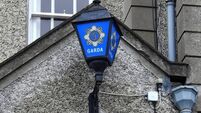Scientists close in on ‘God particle’
It is thought to have emerged from the Big Bang 13.7 billion years ago and have brought much of the rest of the flying debris together to form galaxies, stars and planets.
It is a key component of the “Standard Model” — the all-encompassing theory developed by physicists of how the cosmos as we know it works at its basic level of particles and forces.
But until now, in the four decades since it was first posited, no one has convincingly claimed to have glimpsed the Higgs boson, let alone proved that it actually exists.
At a briefing yesterday at the CERN research centre near Geneva, two teams of “Higgs Hunters” were expected to suggest they were fairly confident that they had spotted it.
But not confident enough, in the physics world of ultra-precision where certainty has to be measured at nothing less than 100%, to announce “a discovery.”
Scientists said they had found signs of the Higgs boson, the particle believed to have played a vital role in the creation of the universe after the Big Bang.
CERN scientists said, however, they had found no proof of the existence of the particle which, according to prevailing theories of physics, gives everything in the universe its mass.
“If the Higgs observation is confirmed...this really will be one of the discoveries of the century,” said Themis Bowcock, a professor of particle physics at Britain’s Liverpool University.
“Physicists will have uncovered a keystone in the makeup of the Universe... whose influence we see and feel every day of our lives.”
The leaders of the ATLAS and CMS experiments, revealed their findings at CERN, where they have tried to find traces of the elusive boson by smashing particles together in the Large Hadron Collider at high speed.
“Both experiments have the signals pointing in essentially the same direction,” said Oliver Buchmueller, senior physicist on CMS. “It seems that both ATLAS and us have found the signals are at the same mass level. That is obviously very important.”
Fabiola Gianotti, the scientist in charge of ATLAS, said they had narrowed the search to a signal centred at around 126 GeV (Giga electron volts), which would be compatible with the expected strength of a Standard Model Higgs.
“I think it would be extremely kind of the Higgs boson to be here,” she told a seminar to discuss the findings. “But it is too early” for final conclusions, she said. “More studies and more data are needed. The next few months will be very exciting ...I don’t know what the conclusions will be.”
Under what is known as the Standard Model of Physics, the boson, named after British physicist Peter Higgs, is posited to have been the agent that gave mass and energy to matter after the Big Bang.
While its discovery would cement current knowledge about particles such as electrons and photons, results of work at CERN could also prove that it does not exist. Such an outcome would undermine the foundations of accepted theories of the make-up of the universe.
“If the first inklings of the Higgs boson are confirmed, then this is just the start of the adventure to unlock the secrets of the fundamental constituents of the Universe,” said Stephen Haywood, Head of the ATLAS Group at the STFC Rutherford Appleton Laboratory.














